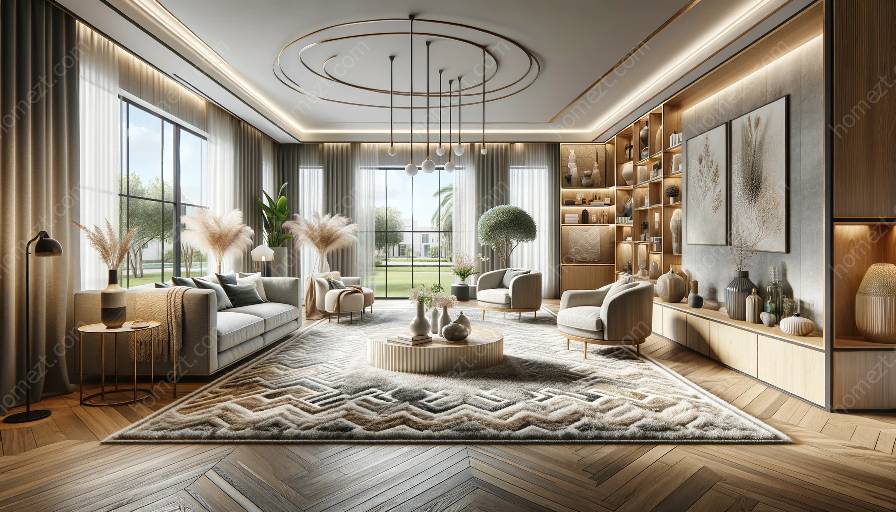Open floor plans offer spacious and versatile living areas, allowing for more freedom in design and decor. However, with large, open spaces, it can be challenging to create defined areas within the layout. This is where area rugs can play a crucial role in delineating and defining different zones within the open floor plan.
Selecting the Right Area Rugs
When it comes to using area rugs in open floor plans, selecting the right rugs is essential. Consider the following factors:
- Size: Choose rugs that are appropriately sized for the specific areas within the open floor plan. Large rooms may benefit from oversized area rugs that cover a significant portion of the floor space, while smaller areas may require smaller rugs to define and accentuate those zones.
- Color and Pattern: The color and pattern of the rugs should complement the overall design scheme of the space. They can either blend in with the existing color palette or serve as a focal point with bold and contrasting patterns.
- Material: The material of the rug should be durable and appropriate for the level of foot traffic in each defined space. Consider factors such as ease of cleaning, comfort, and maintenance.
Defining Spaces with Area Rugs
Area rugs can be used strategically to define different functional areas within the open floor plan. Here are some practical ways to utilize area rugs:
- Living Area: In the living room or seating area, a large area rug can anchor the furniture and define a cozy gathering space. Ensure that the rug extends beyond the edges of the furniture to create a unified and inviting look.
- Dining Area: To distinguish the dining space within the open floor plan, consider placing a rug underneath the dining table and chairs. The rug should be large enough to accommodate the table and chairs, providing a visual delineation of the dining area.
- Work or Study Area: For a designated work or study zone, a smaller area rug can be placed under the desk and chair, demarcating the functional area within the larger space. This can help create a focused and productive environment.
- Transitional Spaces: In transitional or in-between areas, such as hallways or entryways, runners or smaller rugs can define pathways and provide a sense of flow and organization within the open layout.
- Layering Rugs: Layering different rugs can be an effective technique to differentiate and define various zones while adding visual interest. Combining rugs of different sizes, textures, and patterns can create a harmonious and multi-dimensional effect.
- Statement Piece: A bold and expressive rug can serve as a statement piece, adding character and personality to the space. Choose a rug with eye-catching design elements or intricate patterns to become a focal point in the room.
- Color Coordination: Use area rugs to tie together different elements of the decor by integrating colors from the rug into other furnishings, accessories, and decor accents. This can create a cohesive and harmonious look throughout the open floor plan.
- Texture and Depth: Incorporating rugs with varied textures can introduce depth and tactile appeal to the overall design. Consider mixing different textures, such as plush, flatweave, or shag rugs, to add dimension to the space.
- Flexibility: Area rugs provide a flexible and adaptable design element that can be easily switched out to refresh the look of the space. Experiment with different rug styles, shapes, and placements to explore new decorating possibilities.
Enhancing Your Decorating Style
Aside from their functional role, area rugs also contribute to the overall aesthetic appeal and decorating style. Here are ways to enhance your decor using area rugs:
Conclusion
Area rugs are versatile and functional design elements that can effectively define spaces within open floor plans while enhancing the overall decor. By carefully selecting the right rugs and strategically placing them, you can create visually appealing and well-defined zones that cater to different activities and purposes within the open layout.






































